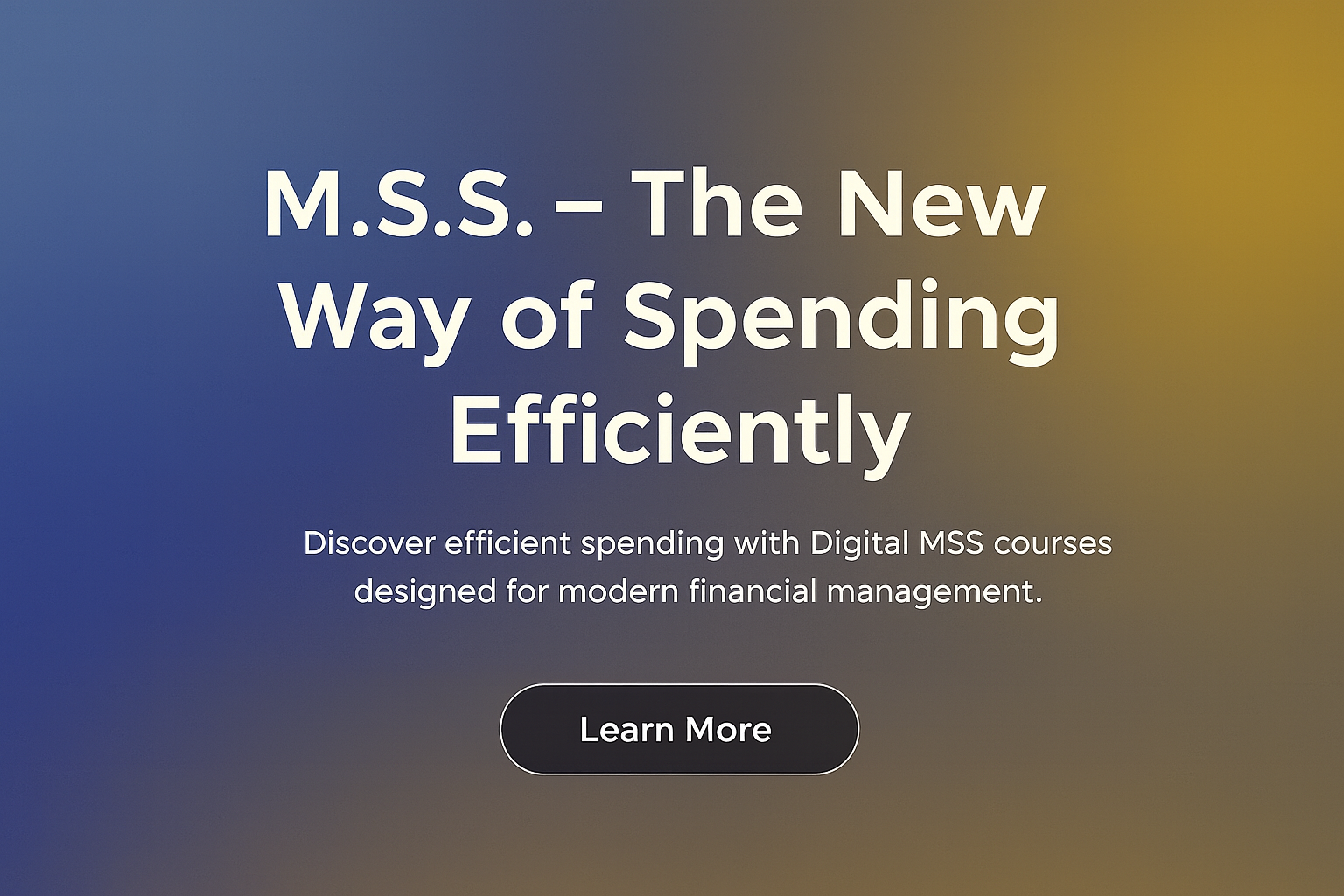In an era where artificial intelligence is no longer the domain of science fiction but a tangible force reshaping industries, the world of finance is experiencing its own profound transformation. From high-frequency trading to automated risk assessment, AI is embedding itself into the core of financial operations. For the everyday investor, this technological revolution has manifested in an increasingly popular and intriguing investment vehicle: the Artificial Intelligence Exchange-Traded Fund (AI ETF). These funds represent a confluence of two powerful trends—the accessibility of ETFs and the analytical prowess of machine learning. They offer a unique window into the future of asset management, promising data-driven insights and exposure to the very companies building our intelligent future. This essay delves into the multifaceted world of AI ETFs, exploring their mechanisms, distinguishing between their core strategies, weighing their potential benefits against inherent risks, and providing a framework for understanding this burgeoning asset class.
Demystifying the AI ETF: What Are They?
Before dissecting the “AI” component, it’s essential to grasp the fundamentals of an ETF. An Exchange-Traded Fund is a type of investment fund and exchange-traded product that is traded on stock exchanges, much like individual stocks. An ETF holds assets such as stocks, commodities, or bonds and generally operates with an arbitrage mechanism designed to keep its trading price close to its net asset value, although deviations can occasionally occur. Their popularity stems from their diversification, lower expense ratios compared to traditional mutual funds, and ease of trading.
An AI ETF builds upon this foundation by integrating artificial intelligence in one of two primary ways, a critical distinction for any prospective investor to understand:
- Thematic AI ETFs: These funds operate like most other thematic ETFs. Their investment thesis is to provide exposure to the AI sector itself. The portfolio consists of publicly traded companies that are significantly involved in the development or deployment of artificial intelligence. This includes hardware companies manufacturing the specialised chips essential for AI (like NVIDIA or AMD), software firms developing AI applications and platforms (like Microsoft or Adobe), cloud computing giants providing the necessary infrastructure (like Amazon and Google), and companies in various sectors like healthcare or automotive that are leading adopters of AI technology. The selection of these stocks is typically based on a predefined index created by an index provider that screens companies based on their revenue exposure or business involvement in the AI space. The AI is the subject of the investment, not the manager.
- AI-Powered (or AI-Driven) ETFs: This category is arguably the more revolutionary of the two. In these funds, artificial intelligence is not the theme but the tool. These ETFs employ sophisticated machine learning models and algorithms to actively manage the portfolio. The AI takes on the role of a portfolio manager, making decisions about which securities to buy, hold, or sell. It sifts through vast quantities of data—far beyond human capacity—to identify patterns, predict market movements, and construct a portfolio optimised for specific goals, such as maximizing returns or minimizing volatility. The AI is the manager of the investment, selecting stocks from across various sectors based on its analysis.
Understanding this bifurcation is the first and most crucial step in navigating the AI ETF landscape. An investor buying a thematic AI ETF is making a long-term bet on the growth of the artificial intelligence industry. An investor choosing an AI-powered ETF is placing their trust in an algorithm’s ability to outperform the market or a human manager, regardless of the specific industry.
The Mechanics Behind the Machine: How AI-Powered ETFs Operate
The inner workings of an AI-powered ETF are a testament to the advancements in data science and computational power. While the specific methodologies are often proprietary and vary significantly from one fund to another, the general process follows a consistent, data-centric workflow.
1. Massive Data Ingestion: The foundation of any AI is data, and AI-powered funds consume it on an unprecedented scale. They go far beyond the traditional quarterly earnings reports and analyst ratings that have long been the staple of financial analysis. Their data inputs can include:
- Market Data: Real-time and historical price and volume data for thousands of stocks, bonds, commodities, and currencies.
- Fundamental Data: Decades of corporate financial statements, including balance sheets, income statements, and cash flow statements from sources like SEC filings (e.g., 10-K and 10-Q reports).
- Alternative Data: This is where AI-driven funds truly differentiate themselves. They can analyse unstructured, alternative data sets that provide unique insights. Examples include:
- Natural Language Processing (NLP) of Text: Scanning and analysing sentiment from millions of news articles, social media posts, trade journals, and even transcripts of executive conference calls to gauge market mood or company-specific sentiment.
- Satellite Imagery: Analysing satellite photos to monitor activity at retail locations (parking lot traffic), manufacturing plants (inventory levels), or commodity storage facilities (oil tank levels).
- Credit Card Transaction Data: Aggregated and anonymised data can reveal consumer spending trends and the performance of retail companies in near real-time.
- Supply Chain Data: Tracking shipping manifests and logistics information to predict potential disruptions or surges in demand.
2. Machine Learning Model Application: Once the data is ingested and cleaned, it is fed into complex machine learning models. These are not simple “if-then” algorithms but dynamic systems designed to learn from data. Common models include:
- Deep Learning (Neural Networks): These models, inspired by the human brain, are adept at identifying incredibly complex, non-linear patterns within massive datasets. They can synthesise information from various sources—market data, news sentiment, and economic indicators—to generate predictive signals.
- Natural Language Processing (NLP): As mentioned, NLP models are used to extract meaningful information from text and speech, turning unstructured language into quantifiable data for the main algorithm to process.
- Reinforcement Learning: In this setup, the AI learns through trial and error in a simulated market environment. It is “rewarded” for profitable trades and “penalised” for losses, allowing it to develop and refine its trading strategies over time without risking real capital initially.
3. Portfolio Construction and Rebalancing: The output of these models is a set of signals or recommendations. The AI then uses these signals to construct an optimal portfolio based on its programmed objectives (e.g., high growth, low volatility, factor exposure). This process is continuous. As new data flows in, the AI constantly re-evaluates its positions. This can lead to more dynamic and frequent rebalancing than a human-managed fund, which might only adjust its portfolio quarterly. The goal is to adapt swiftly to changing market conditions and new information.
4. The Human-in-the-Loop: It is a common misconception that these funds are entirely autonomous “black boxes.” In reality, most AI-powered ETFs operate with a “human-in-the-loop” model. A team of data scientists, quantitative analysts, and portfolio managers oversees the AI’s operations. They are responsible for building and maintaining the models, setting the investment parameters and risk constraints, and intervening if the AI begins to behave erratically or in a way that deviates from the fund’s stated mandate. This oversight provides a crucial layer of risk management.
The Allure of Algorithmic Investing: Potential Benefits of AI ETFs
The growing interest in AI ETFs is driven by a compelling set of potential advantages that challenge the conventions of traditional asset management.
1. Data Processing at Scale and Speed: The single greatest advantage is the ability to process information on a scale unimaginable for a human analyst. A team of humans could never read every financial report, news article, and social media post related to thousands of global companies. An AI can do this in seconds, identifying correlations and signals that would otherwise go unnoticed. This ability to synthesise a vast information universe is the core value proposition.
2. Elimination of Emotional Bias: Human investors, even professionals, are susceptible to cognitive biases. Fear can lead to panic selling during market downturns, while greed can lead to chasing performance and buying at market tops. Herd mentality often causes investors to pile into popular assets, inflating bubbles. An AI, by its very nature, is devoid of emotion. It executes its strategy based purely on data and its programmed logic, adhering to its discipline without fear or greed clouding its judgment.
3. Potential for Alpha Generation: In financial terms, “alpha” (alpha) refers to the ability of an investment strategy to beat the market, or its “edge.” Proponents of AI-powered ETFs argue that by using sophisticated models and alternative data, these funds can uncover market inefficiencies and identify mispriced assets before the broader market does. This could potentially lead to outperformance (generating alpha) relative to traditional benchmarks like the S&P 500.
4. Dynamic Adaptation: Markets are not static; they are complex, adaptive systems. AI models, particularly those using reinforcement learning, are designed to learn and adapt to these changing conditions. While a human manager’s strategy might become outdated, an AI can theoretically evolve its approach as market dynamics shift, potentially offering better performance across different market regimes.
5. Diversification and Accessibility: For thematic AI ETFs, the benefit is clear: they provide diversified exposure to the high-growth AI sector through a single, easily traded product. For AI-powered ETFs, they make sophisticated quantitative strategies, once the exclusive domain of expensive hedge funds, accessible to the retail investor at a comparatively lower cost and with the transparency and liquidity of an ETF structure.
A Note of Caution: Navigating the Risks and Limitations
Despite the exciting potential, investing in AI ETFs is not without significant risks and challenges. Prudent investors must consider the potential downsides before allocating capital.
1. The “Black Box” Problem: One of the most significant criticisms, particularly of funds using complex deep learning models, is the “black box” nature of their decision-making. It can be difficult, sometimes even for the creators of the model, to understand precisely why the AI made a particular investment decision. This lack of transparency can be unsettling for investors who want to understand the rationale behind their portfolio’s composition.
2. Overfitting and Data Snooping: A major risk in any quantitative modelling is “overfitting.” This occurs when a model is so finely tuned to historical data that it perfectly explains the past but fails to predict the future. It learns the noise in the data, not just the signal. A related issue is “data snooping,” where researchers test so many different models on the same dataset that they eventually find one that looks good purely by chance. An overfitted model may show spectacular back-tested performance but falter when deployed in live markets.
3. Lack of a Long-Term Track Record: The vast majority of AI ETFs are relatively new, with most having been launched within the last five to seven years. This means they have not yet been tested through a wide variety of long-term market cycles, such as a prolonged inflationary period or a deep, protracted recession like the one following the 2008 financial crisis. Their performance during the recent bull market may not be indicative of their resilience in a different economic environment.
4. Concentration Risk and High Valuations: Thematic AI ETFs, by their nature, can become highly concentrated in a handful of mega-cap technology stocks. If a fund’s top holdings are the same well-known tech giants that dominate broad market indices, the investor may not be getting the unique exposure they think they are. Furthermore, the AI sector has been subject to periods of intense hype, leading to stretched valuations that could be vulnerable to a correction.
5. Higher Expense Ratios: While cheaper than many hedge funds, AI ETFs—especially the actively managed AI-powered variants—tend to have higher expense ratios than simple passive index funds. The technology, data acquisition, and specialist talent required to run these funds come at a cost, which is passed on to the investor. Investors must weigh whether the potential for outperformance justifies the higher fees.
6. Systemic and Flash Crash Risks: A future-facing concern is the potential for systemic risk. If a large number of AI funds are trained on similar data and using similar models, they might all reach the same conclusion simultaneously. This could lead to herd-like algorithmic behaviour, potentially exacerbating market volatility or even triggering a “flash crash” if they all decide to sell a particular asset class at once.
A Tale of Two Strategies: Thematic vs. AI-Driven ETFs in Focus
To truly appreciate the AI ETF landscape, it’s worth revisiting the core distinction between the two types with more focus. The choice between them is not about which is “better,” but which aligns with a specific investment philosophy.
Investing in AI: The Thematic Approach A thematic AI ETF is a pure-play bet on the AI revolution. An investor who buys a fund like the Global X Robotics & Artificial Intelligence ETF (BOTZ) or the ROBO Global Artificial Intelligence ETF (THNQ) is expressing a clear viewpoint: “I believe the companies that create and enable artificial intelligence will grow significantly in value over the long term.”
- Portfolio Composition: The holdings are predictable and transparent. You will find semiconductor companies, enterprise software providers, cloud infrastructure leaders, and pioneers in autonomous vehicles and robotics. You can look at the fund’s holdings and understand exactly what you own.
- Investment Thesis: Simple and powerful. It’s a growth-oriented strategy tied to one of the most significant technological trends of our time.
- When it Works Best: This strategy thrives when the technology sector, and specifically AI-related stocks, are in favour and experiencing strong earnings growth and market momentum.
- External Resource: A great place to explore and compare thematic ETFs is ETF.com, which provides detailed screeners, holdings information, and analysis.
Letting AI do the Investing: The AI-Driven Approach An AI-driven ETF, such as the AI Powered Equity ETF (AIEQ) or the WisdomTree U.S. AI Enhanced Value Fund (AIVL), operates on a completely different premise. The investment thesis is: “I believe a machine learning model can analyse the market more effectively than a human and identify investment opportunities across any sector.”
- Portfolio Composition: The holdings can be eclectic and may change frequently. One month the fund might be heavily weighted in consumer staples and healthcare, and the next it might shift to industrial and energy stocks, all based on the AI’s evolving analysis of the market. The portfolio is a result of the process, not a pre-defined theme.
- Investment Thesis: It’s a bet on a process or a technology of investment management. The investor is trusting the algorithm’s ability to generate alpha.
- When it Works Best: Theoretically, this strategy should be able to adapt to various market conditions, finding value or momentum wherever its models indicate. Its success is not tied to the performance of any single industry.
Disclaimer: This article is for informational purposes only and does not constitute financial advice. Please consult a qualified financial advisor before making any investment decisions.
How to Evaluate an AI ETF: A Framework for Due Diligence
Given the complexity and novelty of these products, thorough due diligence is paramount. Here is a framework for evaluating an AI ETF, going beyond simple past performance.
- Read the Prospectus and Fund Literature: This is the most critical step. The fund’s official prospectus outlines its investment objective, strategy, the index it tracks (for thematic funds), or the methodology it employs (for AI-powered funds). Pay close attention to the description of how the AI model works and the role of the human oversight team.
- Understand the Methodology: For an AI-powered fund, ask critical questions. What kind of AI is it? What are its primary data sources? Is it a quantitative model based on established factors, or is it a more opaque deep learning system? For thematic funds, understand how the underlying index is constructed. What are the criteria for a company to be included? Is it based on revenue, patents, or some other metric?
- Analyze the Holdings and Concentration: Don’t just look at the fund’s name. Scrutinise its current holdings. For a thematic fund, are you simply buying a collection of mega-cap tech stocks you already own, or does it provide exposure to unique, smaller-cap innovators? For an AI-powered fund, look at the sector diversification. Does the AI tend to make concentrated bets, or does it maintain a well-diversified portfolio?
- Examine the Total Expense Ratio (TER): Compare the fund’s expense ratio to its peers and to relevant benchmarks. A high TER creates a significant hurdle for the fund to overcome just to match the market. You must believe that its unique strategy—be it thematic access or algorithmic management—justifies the additional cost.
- Assess the Track Record (with a Grain of Salt): While past performance is not indicative of future results, it’s still a data point. How has the fund performed relative to a suitable benchmark (e.g., S&P 500, Nasdaq 100, or a relevant sector index)? How did it behave during periods of market stress, like the COVID-19 crash in March 2020 or the bear market of 2022? Look for consistency, but do not be swayed by a short period of stellar returns. The regulatory filings at the SEC’s EDGAR database can provide historical data and prospectus information.
- Consider the Human Element: Research the asset management firm behind the ETF. Do they have a long history in quantitative investing? Who are the data scientists and portfolio managers on the oversight committee? A strong team with deep expertise in both finance and technology is a positive sign.
The Future Trajectory: AI’s Evolving Role in Asset Management
The current crop of AI ETFs is just the beginning. The continued advancement of artificial intelligence, particularly in areas like generative AI, promises to further revolutionise asset management.
The future may bring hyper-personalised investment portfolios, where an AI constructs a unique ETF-like product for an individual based on their specific risk tolerance, ethical considerations (ESG), and financial goals. Generative AI could soon be used to produce instant, in-depth research reports on any company, summarising thousands of documents into a cogent analysis for a human manager to review. AI’s ability to analyse non-traditional data for ESG (Environmental, Social, and Governance) scoring could also become a major driver, offering more objective and comprehensive sustainability ratings than are currently available.
However, this future also brings challenges. Regulators will face the difficult task of overseeing algorithms that are constantly learning and changing. Ensuring fairness, preventing algorithmic collusion, and maintaining market stability in an increasingly automated world will be key priorities for institutions like the Financial Conduct Authority (FCA) in the UK and the Securities and Exchange Commission (SEC) in the US. You can often find discussion papers on these topics on their respective websites, such as the Bank of England’s page on AI in finance.
Conclusion: A New Tool in the Investor’s Kit
The rise of AI ETFs marks a significant and exciting evolution in the investment landscape. They represent two distinct but powerful propositions: a thematic opportunity to invest in the architects of our intelligent future, and a strategic tool that leverages machine intelligence to navigate the complexities of financial markets. They offer the potential for data-driven discipline, rapid adaptation, and access to sophisticated strategies.
Yet, they are not a panacea or a guaranteed path to riches. The novelty of these funds, the “black box” problem, and their unproven performance through long-term market cycles demand a healthy dose of scepticism and a commitment to rigorous due diligence. An AI ETF is not a passive, “set-and-forget” investment in the same way a broad market index fund is. It is an active choice that requires an understanding of its underlying thesis and mechanics.
Ultimately, AI ETFs are a powerful new tool in a diversified portfolio, not a replacement for sound investment principles. For the informed and curious investor, they offer a compelling way to engage with the technological frontier, harnessing the power of artificial intelligence to either invest in the revolution or have the revolution manage the investment. The fusion of finance and machine learning is still in its early innings, and while the path forward will undoubtedly have its hype cycles and setbacks, it is a trajectory that is set to redefine what it means to invest in the 21st century.








